New Mars Forums
You are not logged in.
- Topics: Active | Unanswered
Announcement
#301 2025-06-20 12:56:53
- Calliban
- Member
- From: Northern England, UK
- Registered: 2019-08-18
- Posts: 4,279
Re: Chat







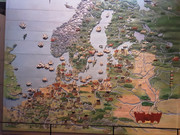









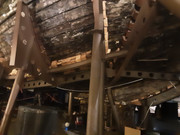

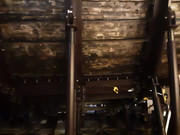

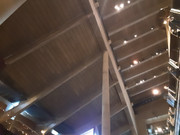
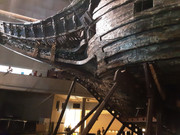















Last edited by Calliban (2025-06-20 13:18:59)
"Plan and prepare for every possibility, and you will never act. It is nobler to have courage as we stumble into half the things we fear than to analyse every possible obstacle and begin nothing. Great things are achieved by embracing great dangers."
Offline
Like button can go here
#302 2025-07-04 11:40:35
- RobertDyck
- Moderator
- From: Winnipeg, Canada
- Registered: 2002-08-20
- Posts: 8,341
- Website
Re: Chat
Happy 4th of July! Independence Day
Here in Canada, we celebrated the birth our our nation on July 1st, Canada Day. I didn't do anything this year. I could hear the fireworks from my house, but couldn't see them. Fireworks during a thunder storm. Don't really want to be in an overcrowded park in a thunderstorm.
Offline
Like button can go here
#303 2025-07-04 12:18:31
- tahanson43206
- Moderator
- Registered: 2018-04-27
- Posts: 23,767
Re: Chat
For RobertDyck re #302
First, thank you for your kind greetings!
Second, congratulations on your country's celebration!
Per Google:
Canadians celebrate Canada Day on July 1st because it marks the anniversary of Confederation, the day in 1867 when several British colonies were united into a single country called the Dominion of Canada. This act, formalized by the British North America Act, essentially created Canada as a self-governing dominion within the British Empire. The holiday was initially called Dominion Day, but was renamed Canada Day in 1982 when the country gained full legal independence from Britain.
I an often astonished by discoveries of important information like that ... I've reached an age where forgetting runs at the heels of new learning. It is good to be reminded of Canadian history, so intertwined with ours.
Second... I was thinking of you earlier today when I chanced across an article about a remarkable discovery in Germany that was published recently. I don't have the article handy, but the essence was that Neanderthal's set up a fat rendering site by a small lake in what is now Germany. The site has been accurately dated, and the implements and the fat rendering processes established, along with supplementary items that showed the likely diet.
In the midst of the article was something I did not know, and ** should ** have known ... humans can suffer from excess protein... a certain amount of fat is (apparently) essential. I had never heard of this before (and still can't believe i hadn't heard of it) but there was an affliction suffered by European's exploring Canada that involved over reliance on rabbits as a food source. I am most familiar with scurvy because I've read so many accounts of sea travel where it was reported, and I am aware that certain trace elements are needed for good health, but this is the first time I'd read of ** protein ** as a concern.
Your posts are distributed fairly widely through the NewMars archive, and there is currently no way that I know of to find them directly.
In consultation with SpaceNut, I just set up a Bookmark topic, with the hope that NewMars authors might be interested in creating posts that point to their work.
Along this line...
I just made a discovery that could greatly improve our ability to find articles created by GW Johnson in the blogspot.com web site.
Until now, all articles by GW Johnson are almost impossible to find quickly. The discovery I made is that the search tool can be invoked from outside blogspot.com, and if the author has created a unique tag within the body of the article, then the blogspot.com search tool will display the article where the unique tag resides. This must mean that blogspot.com maintains a dictionary similar to ours, so that lookup is almost instantaneous.
(th)
Offline
Like button can go here
#304 2025-07-04 15:13:35
- RobertDyck
- Moderator
- From: Winnipeg, Canada
- Registered: 2002-08-20
- Posts: 8,341
- Website
Re: Chat
I an often astonished by discoveries of important information like that ... I've reached an age where forgetting runs at the heels of new learning. It is good to be reminded of Canadian history, so intertwined with ours.
It's more intertwined yet. The US Civil War was 1861-1865. Canada started proposals for independence in the 1850s, but a series of conferences to establish independence in 1864. Note the US Civil War wasn't quite over yet. Canadian Confederation came into effect on July 1st, 1867, but the process came on the heels of the US Civil War.
Another point of trivia. British Colombia was not originally part of Canada, it remained a separate colony. BC had a dispute with Russia over borders. Russia established settlements along the coast, in an area BC considered their territory. They thought they had a agreement with Russia that Russia would sell what is now the Alaska panhandle to BC. One option was to sell all of Alaska to BC, but BC considered the panhandle to be their territory. However, Russia had a dispute with Britain which could have resulted in war. Russia didn't want to sell to a British colony, because of that. So in the fall of 1867 (just months after Canada became a country), Russia sold Alaska to the US. BC was incensed! How dare they sell the panhandle to the US! They considered the panhandle to be their territory! Since it was a colony of Britain, the British sent diplomats (aristocracy) to negotiate the border with the US. The US said the border went this far inland, the British said less far, they compromised halfway. But the British did not dispute how far south along the shoreline. BC considered the entire panhandle to be theirs, so were again incensed that the British would screw this up! So BC quickly joined Canada, officially becoming a province in 1871. That way the Canadian government can negotiate any future disputes/treaties, not the British.
In the midst of the article was something I did not know, and ** should ** have known ... humans can suffer from excess protein... a certain amount of fat is (apparently) essential.
Yes, also known as rabbit starvation. Because rabbit meat is so lean it can cause protein poisoning. Some frontiersmen found this out the hard way. Rabbit meat must be supplemented with something that has a lot of fat. Louis and Clark (American explorers) liked to hunt beavers, because beaver tails have a lot of fat.
North American aboriginal people used to base their diet on the "3 sisters". That is corn, beans, and squash. Corn depletes the soil of nitrogen, but beans add nitrogen to the soil. Actually a particular bacteria grows in nodules of roots of beans, which fixes nitrogen from air to create nitrates. Those nitrates are released into the roots of bean plants, so they have plenty of nitrogen from which to make protein. That's why beans have more protein than other crops. And nitrates leak out of the roots into the soil. For each nutrient that one crop depletes, another crop enriches. So it's sustainable. But it's not just soil.
You've heard that beans and rice make a "complete protein". Well, actually beans and rice have all essential amino acids, but a few amino acids are so scarce that you couldn't eat enough to get what the human body needs. However, what one is lacking, the other has in plenty. So together they provide what you need. Well, corn and beans do the same thing. Corn is scarce in different amino acids than rice, but beans have those in plenty as well. Squash is necessary because the essential fatty acids the human body needs. Yes, that means a plant source of fat. So then find interesting ways of combining corn, beans, and squash to make dinner. That way they could eat a vegan meal most of the time, with only a little meat. Berries in the north provide vitamin C: blueberries, raspberries, strawberries, saskatoon berries (aka June berries), and others.
Offline
Like button can go here
#305 2025-07-04 17:34:14
- tahanson43206
- Moderator
- Registered: 2018-04-27
- Posts: 23,767
Re: Chat
For RobertDyck re #304
Nice follow up!
It sure sounds as though you could advise a group planning to set up shop on Mars on how to plan to meet their dietary needs.
In another topic, Calliban just posted a link to a 2013 paper on settling Plutoids. Those folks are going to need a well balanced diet as well. The plutoid family of objects is thought to be rich in water and nitrogen.
(th)
Offline
Like button can go here
#306 2025-07-04 18:44:52
- RobertDyck
- Moderator
- From: Winnipeg, Canada
- Registered: 2002-08-20
- Posts: 8,341
- Website
Re: Chat
tahanson43206,
We seriously need an experiment to determine effects of partial gravity on the human body. Many of us believe partial gravity will negate many of the harmful effects of zero-G or micro-gravity. All that should be left is less stress on bones and muscles, resulting in strength of bones and muscles adapting to the load they experience. Think skinny weak guy, because on the Moon a mass of 50kg only weighs 18.3 pounds, while on Earth it weighs 110 pounds. If you have a body mass of 75kg, you weigh 165 pounds on Earth. But on the Moon your legs, hips, and back are only supporting 27.5 pounds. However, the damage to the immune system, fluid shifts resulting in eye damage, balance and spacial orientation, and brain structure and function, potentially affecting cognitive abilities and mood. These other effects of zero-G should not occur in partial gravity. Heart weakness is in question, because in partial gravity the heart doesn't need to work as hard to pump blood to the upper body. Heart and cardiovascular effects may be more important for the elderly. Young people have more collagen resulting in firm blood vessels, causing blood to circulate more evenly.
The question is how much gravity is necessary for health? I and others suspect Lunar gravity is enough, it just requires adaptation. However, Putoids? Equatorial surface gravity of Pluto is 0.0632 g. That's 6.32% of Earth! Equatorial surface gravity of Ceres is 0.0290 g. Is that enough to cause convection within cells of the body? Is that enough for molecular weight to affect chemical reactions within cells? Is that enough to avoid the harmful effects of zero-G?
Offline
Like button can go here
#307 2025-07-04 19:05:21
- RobertDyck
- Moderator
- From: Winnipeg, Canada
- Registered: 2002-08-20
- Posts: 8,341
- Website
Re: Chat
Are you familiar with the TV series "The Expanse"? Very realistic space physics. They have nuclear fusion rockets that can thrust for extended periods of time. We could debate how realistic that is, but it's better than "gravity plating". In that show, the solar system is divided between United Earth, Mars, and the Belt (asteroid belt). Belters see themselves as abused colonists, exploited by the "Inners". You could debate the realism of such a scenario, but in this show "belters" who are born and raised in the Belt have weak muscles, fragile bones, and weak immune systems. Not able to even stand in Earth gravity.
Here's a scene where a woman who is a senior official on Earth interrogates a Belter who was caught on Earth carrying restricted technology.
I'm trying to argue for mining asteroids using robot technology, with service technicians who visit briefly, spending most of their time on Earth or Mars.
YouTube: The Expanse - Belter Gravity Torture | U.N. Black Site
Offline
Like button can go here
#308 2025-07-04 19:10:58
- tahanson43206
- Moderator
- Registered: 2018-04-27
- Posts: 23,767
Re: Chat
For RobertDyck re #306
I agree with your opening premise....
The most likely scenario for the experiments you recommend is just living on the Moon for a while.
Science Fiction writers have been dealing with these issues for decades, and even the most recent stories I've read are continuing the thought process. Since I only read science fiction that is free of fantasy (for the most part) the science seems to be getting better and better as writers absorb the latest research.
***
Slight change of topic ... did you catch Void's mention of a 250+ year old Chinese? Even GW Johnson noted the report.
I bring this up because the reported longevity was due to a diet of herbs and similar ultra-nutritious plants.
If these reports can be verified, then it would follow that the remarkable lifespan would be studied in China and I presume elsewhere.
I must admit I am skeptical, but on the other hand, a diet as strict as that one (along with the discipline to adhere to it) might have a positive effect.
(th)
Offline
Like button can go here
#309 2025-07-04 21:11:49
- RobertDyck
- Moderator
- From: Winnipeg, Canada
- Registered: 2002-08-20
- Posts: 8,341
- Website
Re: Chat
Mars Direct included using equipment on the Moon. In fact, Robert Zubrin argued that the Moon is the perfect Mars analogue. In case of trouble, astronauts can return to Earth at any time, no need to wait for planets to align. And only 3 day return to Earth, instead of 6 months. My only criticism is the Earth Return Vehicle. The Mars Direct ERV was optimized for Mars. It works on Mars due to ISPP, but the Moon doesn't have an atmosphere so ISPP won't work. In 1961 NASA tried to design Apollo to land the CSM on the surface of the Moon directly. The problem is bringing fuel to land and lift off from the Moon made it heavy. They couldn't get it light enough to fit on a Saturn V. They tried splitting the Service Module into 2 stages, 3 stages, but diminishing returns. That means each additional stage reduced total mass by a smaller amount. Splitting into 4 stages would actually be greater mass than 3, because each stage requires separate engines. To launch Apollo that way, they would require a larger launch vehicle. There were a couple proposals for "NOVA", a launch vehicle larger than Saturn V. One was Saturn C-8: based on Saturn V but with 8 engines for the first stage, 8 engines for the 2nd stage, and both stages larger diameter to hold more fuel and oxidizer to feed those engines. The 3rd stage would only have a single engine, and same diameter as the Saturn V stage, but twice as tall. This raised concerns about vibrations caused during launch, and whether it would damage buildings including houses in the nearby town of Titusville.
Back in 2016, I proposed using Falcon Heavy to launch a human mission to the Moon. Similar to Robert Zubrin's, but my plan would use a reusable Lunar Module. The LM would be parked in Lunar orbit between missions. One launch for the LM, a second for the crew in Dragon. Second and subsequent missions only require a single launch with crew in Dragon. Because the LM from the first mission will be waiting in Lunar orbit. They could explore multiple sites, but this could also be used as a crew taxi to get crew to/from a permanent Lunar base. The base would be a Mars Direct habitat. Use SLS block 1B or Starship to launch the hab.
Offline
Like button can go here
#310 2025-07-05 14:44:26
- Calliban
- Member
- From: Northern England, UK
- Registered: 2019-08-18
- Posts: 4,279
Re: Chat
The paper discusses the problem of microgravity and the use of rotating habitats.
https://www.researchgate.net/publicatio … the_galaxy
The point that the paper makes is that plutoids and similar icy bodies are the most abundant type of world in our solar system and probably throughout the galaxy. Ultimately, pressurised caverns in these bodies will be home to humanity. The ice will provide radiation protection as well as being the source material for air and water. Deuterium in the ice will provide an energy source. As humanity spreads outward into the outer solar system and into interstellar space, we will discover and settle more of these worlds.
Although the paper doesn't say as much, one other advantage that a cold, icy body provides is an excellent heat sink. A habitat within an icy body could use the thermal mass of the body to cool itself. Free space habitats will need to radiate waste heat into the vacuum. This is a poor heat removal mechanism and it limits the habitation density that is achievable in free space. A habitat in an icy body has a heat disposal mechanism that is far more effective than anything that can be achieved in free space. A 500m diameter rotating habitat constructed in an ice cave can be decked out internally to provide far more living space than the same habitat could provide in free space.
Last edited by Calliban (2025-07-05 15:04:22)
"Plan and prepare for every possibility, and you will never act. It is nobler to have courage as we stumble into half the things we fear than to analyse every possible obstacle and begin nothing. Great things are achieved by embracing great dangers."
Offline
Like button can go here
#311 2025-07-05 22:18:49
- RobertDyck
- Moderator
- From: Winnipeg, Canada
- Registered: 2002-08-20
- Posts: 8,341
- Website
Re: Chat
"Chat" is miscellaneous. Should I post this here, or elsewhere?
Combat robots from the "Terminator" movie series now seem quaint and primitive compared to real combat drones used in Ukraine. The move showed two "Hunter Killer" drones. One flew, with a pair of jet engines that could swivel like the engines of a V-22 Osprey. But it didn't have propeller/rotors like the Osprey, just jet engines. The nose had a machine gun on a swivel mount like that of an Apache attack helicopter. Size of the vehicle, and number/placement of machine guns varied between movies.
The other "HK" was a large tank. It had two arms, each with a large laser cannon. It's chest had a pair of digging arms. But the movie showed a human soldier drop an improvised explosive device (IED) in front of one track, which exploded under the track severing it.
I said these combat vehicles are primitive. A single Stinger missile, or MANPAD for the generic term, could shoot down the flying vehicle. The movie showed an IED disabling the tank, but it would be safer for a small drone to do it. Modern drones are small, cheap, and in great numbers. They're far more effective.
Even the title robot is possible today. A "terminator" was an infiltration unit. Dialogue said the first ones had rubber skin. Boston Dynamics new Atlas robot is highly capable. Combine that with Japan's humanoid robots, and you've got terminator model 1.

As impressive looking as these are, they don't seem as practical in combat as Ukraine's real drones.
Offline
Like button can go here
#312 2025-07-06 02:26:02
- kbd512
- Administrator
- Registered: 2015-01-02
- Posts: 8,410
Re: Chat
RobertDyck,
Hollyweird creates fantasy-based caricatures of what might otherwise be semi-realistic yet still somewhat futuristic military equipment because it's flashy and captures the attention of an audience who are ignorant of anything remotely related to war. It's all hyper-exaggerated silliness from highly creative people who thrive on drama.
My favorite bit of their ridiculous nonsense was "Runaway" (a 1984 move starring Tom Selleck and Gene Simmons) where a "homing bullet" was fired from an absurdly large handgun, after which the projectile would "hunt down" its intended victim at a speed that the camera work indicated was barely above sprinting speed, it would somehow penetrate their skin despite having virtually no energy, and then detonate a "micro explosive" inside of it. Said bullet would turn around corners multiple times, go through windows, and other similarly hilarious absurdities. The funny part was that in one of the scenes where this "special bullet" was used, had the person fired any normal handgun, even a .22LR, the person that this "homing bullet" was fired at likely would've been dead right there. I guess that would've made for a very short and boring movie since that obvious bit of reality would've killed our protagonist immediately.
Anyway...
The flying drone from the Terminator movie has no wings to speak of to provide aerodynamic lift, but sports a giant butterfly tail. This "killer drone" was presumably designed by a self-aware AGI to hunt humans who are moving around at walking speed, so it's designed and built aerial drones equipped with a pair of horrendously loud jet engines. In the apocalyptic post-nuclear war future where nearly all infrastructure has been purposefully destroyed by said AGI, most notably the fuel stocks and oil men who previously supplied the oil to make jet fuel, the same AGI "thought-up" the most energy-intensive flying machine imaginable to capture or kill people who are moving around on foot... and also thought that was the best way to find and eliminate them. If that's the best solution this self-aware AGI can come up with, then I'm going to ask this AGI to "show me it's real war face", because I'm not scared.
If I knew that my prey can move no faster than 20mph, then I think I would employ minimally powered soaring drones that drop the equivalent of a mortar shell's worth of explosive on them, because I can probably find caches of millions of mortar shells to drop. Said shells don't weigh that much, so my flying drone can carry several of them. If I could somehow guide them to their targets, then the humans I'm hunting down would likely never see or hear this flying machine orbiting a couple miles overhead. They would likely never see or hear the mortar bombs being dropped from it, either, until it was far too late. I would certainly not willingly expose my "eyes in the sky" to a relatively easy counter-attack using their short-ranged "laser rifles" by flying it 25 feet above the ground. I would not need any incredibly energy dense power source to power an onboard laser rifle or cannon, and there's almost nothing most humans could do to retaliate. A Stinger might be able to shoot it down relatively easily, but they either have to find a cache of Stingers or restart manufacturing of Stinger missiles from scratch in a world where almost everything has already been destroyed by a barrage of nuclear warheads.
The hunter-killer vehicle is something we already have, minus the laser cannon or whatever from the movie:

China's testing their own copy of the Boston Dynamics "Big Dog" Robot:
USAF "Big Dog" Robot: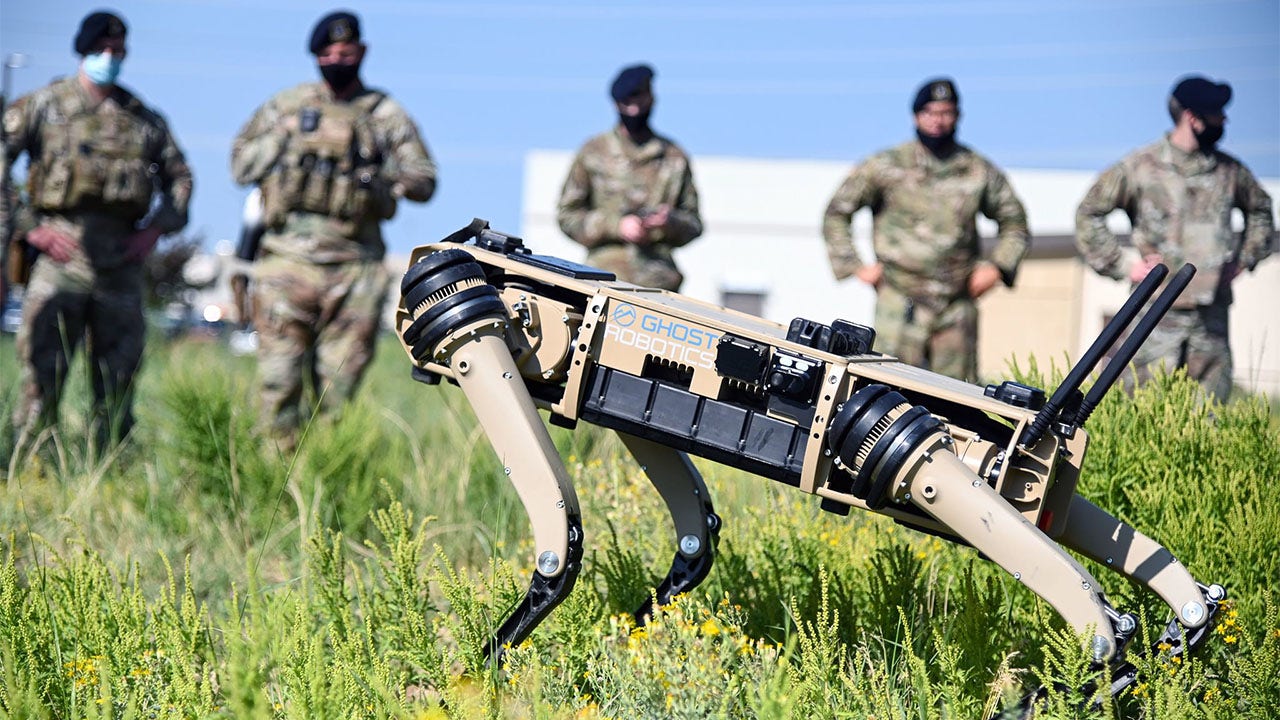
USMC apparently wants these little guys to fire rockets:
A much smaller vehicle that might be more generally useful for a ground pounder to have close at-hand:
When these robot vehicles breaks down because there's no spare parts, gets hit with a computer virus because it's networked software was compromised from the word "go" since the software developer's oblivious teenage daughter connected her China-hacked Tik-Tok app to her daddy's war robot software development laptop, or it can't figure out where to move so it just stops cold and does nothing like a Tesla that cannot identify a parked car, or lacks the ability to recognize that a Marine giggling like a schoolgirl while moving towards the robot under a cardboard box is actually a human and likely an enemy combatant, this is what I would like to have as a soldier:
I don't need it to fire full-auto, so it doesn't need a massive battery and drive motor. I'd be fine with a recoil-operated semi-auto, an oversized .50 cal if you will. I'm not going to mount that ridiculously large ammo box to it. 25 rounds in a belt is plenty. If this gun is attached to some kind of semi-autonomous robot, then I want it to follow me around using visually recognized hand signals or verbal commands, stay low and out of sight if possible, and stay quiet. If I happen to pop my head up and realize, "oh joy, there's 10 dudes with AKs and RPGs only 200 yards away, then I want it to pop up right next to me after receiving a simple verbal "gun up" command. I don't want or need a ridiculously over-complicated computerized sight that makes the weapon unaffordable and therefore unavailable. A large zero magnification red dot is fine for my purposes. We already have those in the inventory. In an ambush, I can immediately return fire with 30mm HE shells that only need to land within about 5m of my target to have a serious deterrent / wounding effect. If you think that's overkill, have someone fire a PKM or RPG over your head, then tell me if you wished you had a real cannon available to convince the gunner to find someone else to shoot at.
This is the kind of optic I want (no computers to fiddle with, no magnification, just a simple AA battery that lasts for years and a wide field of view):![]()
My proposed solution's not exactly the stuff of futuristic action movies. Small caliber cannons have been used in the field by infantry since at least WWI, and the Germans made them walking speed mobile in WWII by adding a light wheeled carriage that could be man-handled by a couple of men. It's not the sort of AGI-enabled "killer combat machine" our military brass dreams about. Even so, if my enemy is equipped with normal infantry small arms, as most are, then when I show up with the Apache's cannon, they're likely to have second and possibly third thoughts about pressing an attack. More importantly, I won't be calling for air support because I'm returning fire with the same kind of weapon attached to an attack helicopter.
The robot doing cartwheels is impressive, but I'd like to know what kind of dexterity its hands have, and if it can use normal infantry weapons. I'd settle for it carrying my pack so I can move about with less difficulty, spare ammo / rations / batteries, and administering first aid. I'd like to see how well first aid robots work before trusting them with weapons. The girl AI robot is creepy as all hell. Maybe we can use those to convince the enemy to leave by either nagging at them or asking for free dinners until they leave in disgust.
One kind of combat robot I still haven't seen fielded yet is a snake robot with a piece of embedded det cord that wraps itself around your leg or ankle and then blows itself up, a near-silent self-mobile land mine if you will. Flying drones are quite noisy, as are wheeled and tracked robots. Imagine a sort of heat seeking "toe popper" that silently moves across terrain, looking to "cuddle up" next to a sleeping soldier. Those would be diabolical- truly scary in a way that larger and more noticeable machines simply aren't.
Offline
Like button can go here
#313 2025-07-06 06:38:40
- RobertDyck
- Moderator
- From: Winnipeg, Canada
- Registered: 2002-08-20
- Posts: 8,341
- Website
Re: Chat
Ukrainian FPV drone
If components for the drone were no longer available, then they could just use an RPG to take down a flying HK. A Russian RPG is just a 2-stage rocket composed using cordite as rocket fuel. That's modern smokeless gunpowder. The launch tube is just a steel tube encased in wood so the operator doesn't burn his shoulder. Warhead is 95% HMX, 5% wax. For armour penetrating rounds, it's a shaped charge with hollow copper shell surrounded by explosive at its base. This is an "explosive formed projectile" that can penetrate tank armour. An RPG may not be able to take out high speed fighter aircraft, or even an A-10 Warthog, but could easily take down an HK flying at walking speed or even sprinting speed at 25 feet above ground.


Offline
Like button can go here
#314 2025-07-06 15:04:21
- kbd512
- Administrator
- Registered: 2015-01-02
- Posts: 8,410
Re: Chat
RobertDyck,
While remarkably sophisticated in their own right, these "ersatz" drones both sides are using only work because components are readily available for low cost from a wide variety of sources, their electronic warfare capabilities are fairly primitive, and until more recently appropriate defensive tools were unavailable. Even so, if you have a guy in your squad who has been alerted to a drone's presence (the key qualifier here) and has a shotgun, he can probably take it down if it tries to attack. That makes shotguns a line infantry weapon once again, useful for more than blowing doors off their hinges or launching signal flares. The Mossberg and Remington series even had screw-on muzzle cups for launching hand grenades at one point, although rifle grenade launchers might be more appropriate for infantry. After you load up a FPV drone with a heavy mortar shell or RPG, it no longer has the fantastic maneuverability of something carrying only a small camera. That means it moves more like a bird- still capable of some evasive maneuvering, but much slower and more predictable. A bird-like target is easily brought down with a modern pump or semi-auto shotgun.
My favorite innovative "ersatz" weapon that all credit goes to the Ukrainians for inventing, is the exceptionally light / small / fast to setup high velocity 40mm grenade "mortar" that uses the high velocity grenades fired by the Mk19 40mm automatic grenade launcher. The Mk19 is a beast of a weapon, every bit as heavy as a .50 caliber machine gun, very expensive, and hard to get your hands on. The Ukrainians quickly ran out of Mk19s, but had piles of the Mk19's high velocity grenades that are much too powerful (too much pressure and recoil) to fire from the M203 40mm grenade launchers or similar shoulder-fired grenade launchers. Instead of tossing out their ample supply of high velocity grenades, they instead created these incredibly light (less than 5lbs vs 78lbs for the Mk19 alone- no tripod or ammo box included) 40mm "mortar tubes" that could launch the grenades by planting the butt of the weapon on the ground- a "slam fire" mortar. They even came up with range tables to fire them accurately. Eventually, a trigger-fired variant was created, although slightly heavier because it came with a proper base plate like a real mortar. They ran low on true mortar rounds, mortar tubes, and trained mortar crews, so they substituted-in something that can be easily made and transported by the thousands, easily carried by a single man on foot, unlike a crew-served mortar, far cheaper than any kind of purpose-built mortar system, and the range is still well beyond normal infantry rifle ranges (1,500m). Better still, the recoil impulse is so much lower than the 60mm light mortar that our Marines carry that they don't have to worry about collapsing the roofs of buildings if they set them up on the roof. We have videos of that problem from the earthen buildings of Afghanistan- they weren't designed to support the force of hard-recoiling mortars. The noise of firing is also dramatically reduced. Since there's almost zero setup time, you can shoot, move, and reload while moving, so it's an offensive weapon like the WWII era Japanese "knee mortar", but half the weight and triple the effective range of the Imperial Japanese Army's Type 89 grenade discharger / "knee mortar". Practically speaking, you cannot do that with a 60mm mortar- even hasty fire involves some setup time. That was highly impressive, at least to me. An acute battlefield problem was expediently and economically solved without using lots of high tech equipment or R&D time.
We recently developed the Pyros glide bomb as part of the "smart tactical munition" program: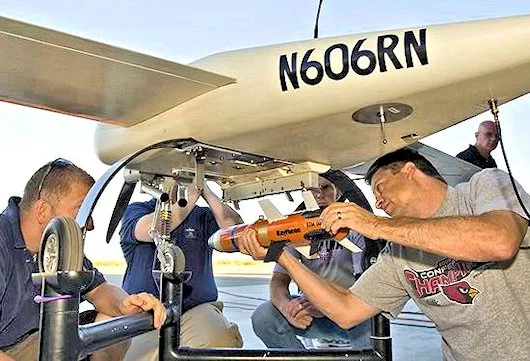
Miniaturized electronics and sensors allow them to be guided by a combination of GPS, imaging radar or imaging IR, and/or lasers. They have about the same weight as a mortar shell. Each guided munition weighs 13lbs and carries a 7lb warhead. In terms of weight, that's about the same as an 81mm mortar shell with its propellant charge. They can "top attack" tanks, obviously destroy any lesser vehicle, and of course, they're pretty effective against unprotected personnel in the open. Shooting these munitions down would require much more sophisticated air defense systems. A guy with a shotgun is unlikely to prevent one from hitting its target.
We've never heard about such small drones swarming US Navy ships operating near Yemen because those ships were too far away from the coastline for small / cheap / disposable drones to reach them, they can be jammed relatively easily, and having access to a radar and IR guided air defense system like the Phalanx / CIWS makes them easy prey for a Gatling gun designed to shoot down incoming missiles moving at high subsonic to low supersonic speeds. The coordinated light displays you see hundreds of very small drones performing are also not indicative of their ability to carry out a coordinated attack. Anything that small would not be capable of sinking or even seriously damaging a warship. As the size of the drone increases to something approximating a lethal threat to a ship, so does its cost, logistical tail, and visibility to defensive systems. If it can carry a 250lb warhead or greater, then it's no longer small / cheap / light, it's guidance sensors and computer are expensive, and you have to carefully evaluate how well it performs against its intended target. This is why drones can't replace purpose-built guided missiles and bombs.
That's why I'd be cautious about drawing too deeply on "lessons learned" from the Ukraine War. The circumstances of that war are highly unusual. I wouldn't ignore these new tech innovations, but the belief that tanks have become useless or that future wars will resemble the Ukraine War are equally fallacious.
My most important takeaway from the Ukraine War is that if you're going to fight a protracted war against a similarly capable opponent, then don't over-invest into high-tech expensive weapons if something much cheaper / much faster to produce / easier to use will get the job done acceptably well. Canada and America came up with the CQ-10 Snowgoose, a paramotor / autogyro flying contraption to deliver medical supplies and ammo to troops on mountain tops in Afghanistan, so as not to endanger pilots on airdrop resupply missions. It was originally designed as a leaflet dispenser for psychological warfare, if you can believe that. Although it worked well and was used in combat, it was quite large, about the same weight as a Cessna 152, and very expensive. The Ukrainians and Australians, lacking the US DoD's R&D budget, stuffed their medical supplies and ammo into waxed cardboard motor gliders. If one gets shot down or suffers a mechanical failure, it's not a million dollar loss. It can't carry as much or as far, obviously, but it carries enough to be very useful and the cost is peanuts.
The CQ-10's flight range is about 180 miles or so, with a hefty 575lb payload. However, it requires a Rotax aircraft engine, aviation gasoline, motor oil, mechanics who know how to service a piston aircraft engine, etc. The Sypaq Corvo air resupply cardboard drone has a range of about 75 miles carrying a 3-5kg payload, which represents a full combat load of 5.56mm, or quite a lot of medical supplies to treat one casualty. I would opine that using those new 500Wh/kg batteries from Amprius, it can probably double its range to 150 miles. At that point, it's close enough in range capability to the CQ-10 that it's probably a cheaper option for intermittent aerial resupply, unlikely to be intercepted because it's primarily cardboard, which doesn't show up on radar very well.
If your military has more time to prepare and an advanced aerospace industry, then it can devote resources towards larger piston or gas turbine combat drones, fabricated from Carbon Fiber, capable of significant range / carrying capacity / speed, and crucially, designed with some measure of electronic warfare / anti-jam resistance.
Offline
Like button can go here
#315 2025-07-06 16:27:13
- RobertDyck
- Moderator
- From: Winnipeg, Canada
- Registered: 2002-08-20
- Posts: 8,341
- Website
Re: Chat
There is a handheld jamming device that looks like an oversized rifle. It can jam radio signals for a drone. Jamming has become so pervasive on the battlefield that both sides now use optical fibre to guide FPV drones. I saw a video of a small Ukrainian FPV drone (same as the picture above) flying through the forest, trailing an optical fibre. They can now make optical fibre from plastic. The Russian soldier hid until it passed, you could hear the drone on the video, then used a pair of scissors to cut the cable. The drone dropped and exploded. So scissors are now a battlefield weapon.
Operation Spiderweb was brilliant! Effective on so many levels, but probably cannot be done again. Ukraine attacked 5 Russian bases, 4 succeeded. I recently saw a video that explained in more detail, and what happened at the 5th base. The 20-foot shipping containers had a false roof, we knew that. But the FPV drones were optical fibre guided, again like the one shown above. The shipping container had a StarLink, which is hard to jam. Locals realized it was an attack, so the truck driver tried to throw dirt and rocks onto the container roof, which obviously did nothing. But a local used a shotgun. The container caught on fire, which tells me control electronics in the container roof must have had lithium batteries. When the control electrics fried, all drones dropped.
Spiderweb had the drones fly in formation. The truck with the containers was parked a few miles from the military base, but within optical fibre range. Ukraine knew exactly what defence system the Russians have, so programmed the drones to change formation, forcing the computer for the Russian aircraft defence system to recalculate a defence solution. Before the computer could finish recalculating, the drones change formation again. Brilliant, and carefully tuned to get through the Russian system. Russia will probably find a way to ensure that never happens again.
Abrams tanks are quite vulnerable in Ukraine. Top attack from either shoulder launched anti-tank missiles, or FPV drones hits the tank where armour is thin. Like most tanks, Abrams has thickest armour in front, assuming another tank is firing on it. Russian tanks have the same vulnerability, making them easy pickings for Javelin missiles. Russian tanks have an auto-loader, which reduces tank crew to 3. This makes the tank smaller and lighter, so tanks can drive across civilian bridges designed for cars. Some bridges in Ukraine are so light that the weight of an Abrams would cause it to collapse. Abrams is 54 to 66.8 metric tonnes, depending on version. (Wikipedia) Russia T-90 is 46 to 48 tonnes. That makes a difference on some bridges in Ukraine. But those Russian tanks place ammunition beneath turret crew, so when it goes off, crew are dead. Abrams keeps ammunition in the back of the turret with "blow out" panels, so exploding ammunition most likely will not kill crew. Still, the tank will be destroyed.
Ukrainian naval drones are speed boats loaded with explosives. Low in the water, so hard to spot. Russian CIWS are not designed to shoot down, can Phalanx? A Ukrainian drone boat took out the Moskva, a guided missile cruiser and the flag ship of the Black Sea fleet. Russia has relocated their entire black sea fleet away from Ukraine, so out of combat. And recently they mounted a missile launchers on a drone boat, which launched an AIM-9. It took out an Su-30 fighter jet. The boat tried to retreat to a safe harbour, but a Russian attack helicopter sunk it. Still, the Su-30 was worth more than the boat. Another boat launched a missile which took out a Russian helicopter. Ironically, the helicopter was hunting Ukrainian drone boats.
However, the one submarine that Ukraine sunk was hit by a Neptune missile. The first time Ukraine hit it, the submarine was in dry dock in Crimea. Russia repaired it, at least sufficiently to be seaworthy. When the submarine tried to leave dry dock, Ukraine hit it again, also with a Neptune missile. This time the submarine sunk.
Offline
Like button can go here
#316 2025-07-06 16:31:24
- RobertDyck
- Moderator
- From: Winnipeg, Canada
- Registered: 2002-08-20
- Posts: 8,341
- Website
Re: Chat
Ukraine is now using 4-wheel ATVs modified to be self-driving, with a cargo bed and no seat. To deliver supplies to soldiers at the front. Less expensive than an APC, HMMWV (Hummer), or even a pickup truck or SUV. They're expected to be targeted by the enemy, so logistics supply is unmanned whenever possible.
Offline
Like button can go here
#317 2025-07-06 17:28:15
- kbd512
- Administrator
- Registered: 2015-01-02
- Posts: 8,410
Re: Chat
RobertDyck,
The handheld jammers that work on FPV drones don't work against our guided missiles and bombs. That's part of what I meant about cheap and low cost drones coming with serious operating limitations that extend beyond range and speed, which are important but don't guarantee a "kill".
The Iranians, Russians, and presumably the Chinese have all tried to jam our Predator and Global Hawk drones, without much success. That's the difference between a small FPV drone and a multi-million dollar combat drone that has long range sensors and can fire missiles or drop bombs. Short of shooting it down, you're not going to interfere with the operator's comms link, decoy it, or jam its sensors. It's basically a miniature fighter jet. We miniaturized the radar that the F-18 uses, it still has the full capabilities of the older/larger system installed aboard F-18s, to include range and attack modes, and then stuffed it into the nose of our XQ-58 combat drones. Jamming a handheld drone is one thing. Jamming the F-18's radar is another. The Iranians have shot one down with SAMs, but since those drones have few defensive capabilities and move at modest speeds, that's not terribly difficult to do.
Operation Spiderweb was brilliant, but as you noted, probably will never be repeated. After you expose that kind of vulnerability, the enemy will respond. They're evil, not stupid.
All tanks are quite vulnerable to top attack because they have nothing but a thin sheet of armor steel on the top of their turrets, usually no more than an inch thick. Virtually any kind of HEAT warhead is guaranteed to penetrate, with catastrophic results. There's nothing magical about the Abrams in this regard. In American use, tanks are supported by infantry, artillery, and air support. In the Ukraine War, lack of infantry support leaves them vulnerable to the kinds of attacks which are simply not realistic when fighting against US or NATO forces. American and British tanks are much heavier than the tanks used by other nations because they're designed to shrug off hits to the frontal armor during an armored assault. Most kinds of anti-armor weapons are ineffective against Abrams and Challenger over the frontal arc.
The Abrams sent to Ukraine do not include the full armor package that the US Army uses. In point of fact, all foreign-operated Abrams do not include the American heavy armor package. Most people don't know that, but the Saudis, for example, have complained about this. The tanks we sent to the Ukrainians are also about 20 years old, so they lack the latest electronic upgrades to the fire control system. They were given the best ammo we have, though, fully capable of penetrating the frontal armor of the latest Russian tanks. Despite being older, both the fire control system and radios are superior to any Russian tank. Even the Russians admitted this. If operated correctly, the gun is accurate and the sabot round will punch through opposing tanks using pure kinetic energy. The crushing weight, voracious appetite for fuel, and complexity are its drawbacks. As a fighting vehicle, it's as good as anything else out there- not better, but just as good.
Phalanx are designed to automatically engage both airborne and seaborne threats. For seaborne threats, however, we typically use our more powerful manually operated 25mm Bushmaster chain guns mounted to the main deck, using SAPHEI shells. Phalanx are typically loaded with DU penetrator sabot rounds to punch through airborne anti-ship missiles. The onboard radars are powerful enough to track the tiny outgoing shards of metal, as well as the inbound missile. Unlike Russian CIWS, the Phalanx are self-contained weapon systems with their own on-mount power source. There's no deck penetration for external system components. Nominally, power is externally supplied by the ship. Phalanx are also integrated into the AEGIS Combat System so they can receive target prioritization and advanced warning of inbound missiles from more powerful radars such as SPY-1 and now SPY-6. We mount them high in the superstructures of our warships so that they can aim both up and down.
Naval drones with sufficient combat capability to deal with enemy aircraft and ships will be expensive by their very nature. I would be very cautious about extrapolating useful and repeatable capabilities on the basis of a handful of data points because we don't know how many of these attacks were thwarted in various non-kinetic ways or outright failed due to defensive action on the part of the Russian Navy. As a general rule, Russian Navy training and ship material readiness condition are awful. Moskva reportedly put to sea with a non-functional air search radar, something no other adequately resourced naval force would ever do. As offensive weapons, seaborne drones might be more cost effective than massed missile attacks, though. Since they attack right at the waterline, they can be highly effective in sinking ships in the traditional way.
As far as the Neptune missile attack on the submarine is concerned, this would be why stealth and opsec are so critical to successful submarine operations. This also strikes me as a non-repeatable offensive action unique to the Ukraine War, due to proximity. If they did this to three or more submarines, then I would reconsider its use as an effective military tactic.
Offline
Like button can go here
#318 2025-07-08 01:00:29
- Calliban
- Member
- From: Northern England, UK
- Registered: 2019-08-18
- Posts: 4,279
Re: Chat
Fascinating. Robots have come a long way in a short time. Though I note that the Boston Dynamics robots do not seem to have found much of a market outside of military applications. I would suspect that ITAR regulations stand in the way of commercialisation. The world's military powers are locked into an arms race for drone technology and no one wants to relinquish control over something that might be of use to an adversary. Rather like nuclear technology before it, robotics is too tightly controlled to allow effective commercialisation.
"Plan and prepare for every possibility, and you will never act. It is nobler to have courage as we stumble into half the things we fear than to analyse every possible obstacle and begin nothing. Great things are achieved by embracing great dangers."
Offline
Like button can go here
#319 2025-07-08 09:33:34
- kbd512
- Administrator
- Registered: 2015-01-02
- Posts: 8,410
Re: Chat
My personal take on Russian armor is that their T-72 is a roughly correct design, but even their frontal armor is ineffective against modern sabot and shaped charge rounds, their fire control system needs modernization, and their thermal imagers used to surveil the battlefield and acquire targets are woefully inadequate. The 125mm smoothbore cannon is adequate, but their sabot rounds could be improved. I would prioritize the improved thermal imager and fire control upgrades.
Here's how I would overhaul a NATO tank program:
1. Give up on sabot rounds for direct penetration of modern composite armor. Kinetic penetrator rounds do work, but the extreme heat involved rapidly "burns out" the barrels through erosion caused by hot high pressure gases, especially the latest and greatest sabot rounds, which renders accuracy unacceptable after far fewer rounds fired. Barrel life has seen a steep decline with successive "improved penetration" versions of the M829 "silver bullet" sabot round and similar analogs. M256 L44 cannon barrels are now seeing service lives in the low thousands of rounds at most. Each M829 now costs as much as a subcompact car. The Tungsten penetrators fielded by other NATO nations have only made the barrel erosion problem worse, because those require extra velocity to equal the performance of our DU penetrators, which is why you see longer L55 barrels on the latest version of the Leopard 2, prompting Rheinmetall's experimentation with 140mm caliber guns. Either way, the gun tubes are becoming unwieldy in urban warfare scenarios and if we're increasing caliber to 140mm, then why not use 155mm and call it a day?
2. Standardize on 155mm caliber for all towed artillery pieces, self-propelled guns, tank main guns, naval guns, and airborne gunships. The US Army discovered long ago, much to its chagrin, that their tanks were nowhere near as well protected against 155mm artillery shells as they thought they were, whether fired at high angle or low angle, whether air burst above the tank or allowed to make contact and detonate. Air burst 10m to 20m above the target proved to be the most destructive, but direct hits also rendered the target tanks inoperative as tanks. 155mm did not penetrate the frontal armor, but splinters from the shells punched right through the main gun tube of the target tanks, totally wrecked their optics and radio antennas, completely sheared off parts of the running gear (road wheel bogies and tracks), and punched through the engine deck in airbursts, setting fire to the vehicle after destroying the engine beneath the thinner engine deck armor. Given that the M48 and M60 tanks used in the test were no longer usable as tanks, and would require depot level repairs to return to service, I'd say that still counts as a "kill". No modern Russian or NATO tank would fare any better when hit with 155mm. The M776 cannon that equips the M777 towed howitzer is a L39 weapon that weighs 3,700lbs for the barrel and breech, about 6,370lbs in total when configured as an artillery cannon. The M256 L44 cannon that equips the Abrams weighs 8,330lbs. The L55 cannon of the Leopard 2 weighs 9,170lbs I would reduce the M776 cannon's length to L29, same as ye olde M109s, and Charge 4 to reduce the length of the breech and recoil.
3. Cease and desist with loading up every imaginable type of weapon and round of ammo aboard every vehicle. The sheer quantity of equipment we try to cram into each vehicle is, in point of fact, driving the horrendous cost and weight of our tanks and other armored vehicles. A tank should have its driver and vehicle commander located inside the hull and nobody inside the turret, which implies an autoloader for the main gun, a high quality thermal imager, panoramic fiber optic cameras that provide a 360 degree view of the battlefield without having the crew constantly expose themselves, a top notch fire control computer, and a battery of grenade launchers for smoke and HE or buckshot for close-in vehicle defense. It doesn't need multiple machine guns in different calibers, a small caliber automatic cannon, Javelin missile launchers, and partridge in a pear tree. The more people and weapons you stuff into a tank, the higher its silhouette becomes, which makes it easier to spot from the ground by casual observation, and the heavier yet more vulnerable you make the vehicle and people in it, simply because you cannot adequately armor the top and sides of a tank with a gigantic 3-man turret.
For a tank to support infantry assaults, you need a big gun that fires powerful shells, mostly to deal with light vehicles and dug-in infantry using fragmentation effects. You can and will fire that $15K M829 "silver bullet" at a Toyota pickup truck if that's all you have, and it will do what it does, but to what end? Whether or not it can outright "punch through" opposing tanks is largely irrelevant unless you're fighting hordes of tanks over open ground. Even if you are, that's what Javelins and airborne tank destroyers are for. What's the point of deploying infantry and combat drones in support of armored ground vehicles if you're not going to use all of their strengths to deliver asymmetric counter-attacks to defeat opposing forces? The western world has an unhealthy ongoing fascination with the idea of "dueling" and "aces". War is, "We're using everything we have against everything our enemy has." It's not, "We're going to defeat your tank with our superior tank in one-on-one combat." You get "quality" not only from technological superiority, but also from exhaustive realistic training, well-maintained equipment with plentiful spares, local numerical superiority, and the element of surprise.
My concept of "useful combat drones" involves small-ish (~750lbs) remotely-piloted fixed wing piston engine aircraft that can fly at speeds up to 200mph or so for up to 1 hour, and drop a single 155mm glide bomb shell on enemy armor or field fortifications. If the air defense threat is minimal, perhaps Apaches and Warthogs can fulfill our "airborne tank destroyer" doctrinal role to protect our combined armor / infantry advances. Apache and Cobra gunships ultimately replaced the M18 and M36 tank destroyers of WWII, as well as armored cavalry scouts for most missions, but now those roles appear ready to assign to small combat drones. I would retire the Apaches and Warthogs at this point because the threat posed by radar-aimed autocannon and shoulder-fired missiles to piloted close air support assets is far too great against a peer level adversary. Afghanis may not have any Stingers. Russia and China, however, have thousands of them. Flying at treetop level against them is a better than average way to lose good men and machines on every mission. When, not "if", some of our combat drones get shot down, we build more and our drone operators live to learn from their failures since they weren't aboard the machines that were shot down.
We'll use trucks and cargo ships to transport / fuel / arm / repair our combat drones. We'll launch them from gun-based catapults that use fuel and compressed air in conjunction with the high-low pressure principle our 40mm grenades use for "soft launch". We'll recover them with nets so we don't need runways. This worked well for drones of that approximate size carried aboard American battleships used during Gulf War I to spot the fall of rounds from the 16 inch guns.
The XM-803 (forerunner to the M1 Abrams, equipped with a 152mm rifled gun):
This is what we need to get back to, but without the oversized / overweight 3-man turret, meaning only 2 men in a highly protected hull compartment. We must use electro-optical sensors to surveil the battlefield instead of exposing tank crews to enemy small arms and artillery fire while they're actively operating their tank. The entire point of putting them in a tank was to protect them so they could focus on neutralizing targets that are holding up infantry advances. Keeping all their hatches open, because they're still using their eyeballs to observe, has become a highly lethal anachronism. This new tank concept deals with enemy field fortifications and infantry by direct-firing 100lb HE shells at them. When you start direct-firing 155s at people, then everyone gets down, or everyone dies.
The infantry themselves will start manning self-mobile 30mm cannons that the Apaches previously carried, using small arms for close range self defense only. As they advance, their first objective is to tear apart light vehicles, machine gun nests, mortar pits, and infantry formations using HEI cannon shells. The Chinese are sure to fight island defense campaigns in the South Pacific roughly the same way the Japanese did during WWII, because there's not many viable alternatives to what the Japanese did, even with modern weapons.
This new way of fighting is firepower-based, rather than a specialized / limited supply weapon for this / that / the other. Most ground targets can be dealt with using 155s. Anything that requires a JDAM or bunker buster or cruise missile will be delivered by F-35s, B-21s, B-52s, ships, and submarines. Missiles will be used sparingly, mostly limited to attacking enemy air defense systems, ships, and aircraft. There are not enough of these advanced weapons, we cannot easily and rapidly produce more, and huge amounts of resources are captured in their production, stockpiling, and maintenance. Iron bombs and artillery shells can be manufactured by the millions for comparatively little cost, especially if the shell bodies or bomb casings are stockpiled without filling them with explosives.
We need all services to adopt 155mm. L29 155s for our tanks to minimize barrel length / weight / recoil force, L39 155s for our towed M777s and M109s, perhaps a few L52 M777ERs for niche applications, and 58 caliber 155s for the US Navy to replace their less effective 5 inch Mk54 guns. When everyone is using 155, figuring out logistics becomes rather easy. You need 155 shells and their modular propellant charges. For longer shots, we'll splurge on Excalibur munitions so we don't burn out the barrels while "firing for effect". All the services have spent mad money on special application guns. The US Navy spent "stupid money" trying to make a 155 fly 100 miles. Each 110lb guided shell cost $1M, as much as a Tomahawk cruise missile that flies 1,500 miles with a 1,000lb warhead. A 58 caliber cannon can still reach out 40 miles or so with a $50K guided shell. That would have been a very useful capability for the US Navy to have aboard ships, because it roughly doubles engagement range over the standard 5inch L62 Mk54 gun. That would put the ship that fired it over the horizon, against most islands.
The objective of this program is to build lots of guns and shells, not "special guns" that require their own "special shells". Since 155 works for the Army and Marine Corps, it works for the Navy, too. Heck, we're going to figure out how to mount 155s in Spectre gunships so we can shell people from the air as well. Against adversaries like Russia and China, more shelling equals "more better". Russia is not wrong, as it pertains to their liberal use of artillery. They don't call artillery the "King of Battle" for nothing. The fact of the matter is that a 100lb HE shell is adequate to kill most military targets, if accurately delivered. Bunkers, ships, and certain kinds of area targets like runways are the only kinds of targets that require more powerful guided bombs and missiles or torpedoes.
Offline
Like button can go here
#320 2025-09-12 08:31:13
- Terraformer
- Member
- From: The Fortunate Isles
- Registered: 2007-08-27
- Posts: 3,988
- Website
Re: Chat
Finally have a loicense to drive my car. Yay! No more reliance on overpriced underreliable trains that get hit with the ocassional wildcat strike!
Use what is abundant and build to last
Offline
Like button can go here
#321 2025-09-12 09:55:54
- Void
- Member
- Registered: 2011-12-29
- Posts: 9,141
Re: Chat
Happy person, good for you.
Last edited by Void (2025-09-12 09:56:58)
Is it possible that the root of political science claims is to produce white collar jobs for people who paid for an education and do not want a real job?
Offline
Like button can go here
#322 2025-11-06 19:02:11
- RobertDyck
- Moderator
- From: Winnipeg, Canada
- Registered: 2002-08-20
- Posts: 8,341
- Website
Re: Chat
There's the 'S' word all over the ground!!! OMG!!! Another winter of freeze-your-ass-off has begun. We can only hope it will melt tomorrow during the day. It's November, the first snow that stays used to happen about now. For the last couple decades, it has been middle of November. I want 2 more weeks! Whine, whine, whine, whine!
Offline
Like button can go here
#323 2025-11-06 22:17:23
- tahanson43206
- Moderator
- Registered: 2018-04-27
- Posts: 23,767
Re: Chat
This message of yours about snow reminds me to tell you our local Linux group has a member who lives North of Toronto, by (or not far from) the lake. His name is Kal and he's joined our group because of outreach our leadership has conducted over the years. We meet on Zoom once a month, and you'd certainly be welcome to drop in if you would like to meet him. The time is 19:00 my time, which I think is the same as your's but I'm not sure. You may be a time zone west, so 18:00.
(th)
Offline
Like button can go here
#324 2025-11-07 13:45:43
- RobertDyck
- Moderator
- From: Winnipeg, Canada
- Registered: 2002-08-20
- Posts: 8,341
- Website
Re: Chat
If he lives north of Toronto, it's not on Lake Ontario. Possibly one of the cities on the shore of Lake Simcoe.
I live in the Central time zone, same as Texas. That's one time zone west of the Eastern time zone, that covers New England and the Atlantic coast.
Offline
Like button can go here
#325 2025-11-23 03:37:10
- Calliban
- Member
- From: Northern England, UK
- Registered: 2019-08-18
- Posts: 4,279
Re: Chat
Why British people looked older than they were in old photos.
https://youtu.be/ECfhU_I9mjQ
In short, life was tougher. The air was polluted, food was unhealthy, almost everyone smoked. The work environment was dangerous and polluted.
"Plan and prepare for every possibility, and you will never act. It is nobler to have courage as we stumble into half the things we fear than to analyse every possible obstacle and begin nothing. Great things are achieved by embracing great dangers."
Offline
Like button can go here
